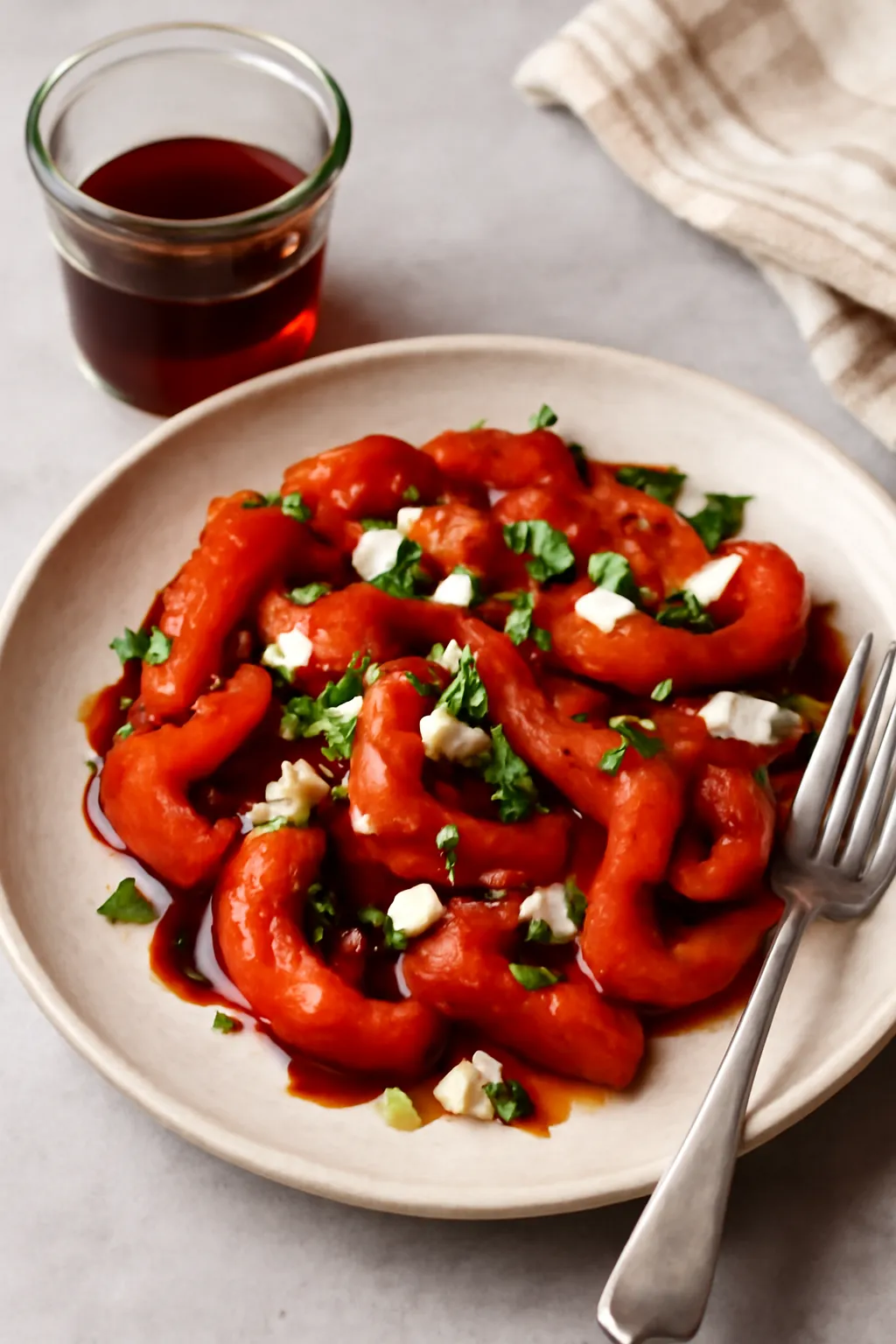Have you ever wondered what gives certain dishes that sharp, tangy kick that lingers just long enough to make you crave more? Or why some salad dressings taste so much more luxurious than others? The answer often lies in a single, underrated ingredient: red wine vinegar. In this article, I’ll walk you through everything you need to know about red wine vinegar dishes, red wine balsamic variations, and even how you can make your own vinegar from scratch.
Red wine vinegar
Red wine vinegar is more than just a tangy splash in your salad bowl. It’s a foundational flavor-builder that has transformed home and professional kitchens alike for centuries. Made from fermented red wine, this vinegar is known for its bright acidity, deep color, and a flavor profile that balances sharpness with subtle complexity.
Aged History and Global Use
Red wine vinegar has been used in European kitchens since Roman times, not just as a flavoring but also as a preservative and cleaning agent. Today, it’s a pantry staple in cuisines from Mediterranean to Latin American and even Southeast Asian cooking.
For example, I’ve used it to brighten up grilled vegetables, to marinate lamb chops overnight, and to finish a lentil soup with a kick of brightness. One small splash of this vinegar can change the profile of an entire dish.
Flavor Profile
Expect a deep, wine-forward tang, a mellow sweetness from the grape origin, and often a subtle oakiness if aged in barrels. It’s particularly compatible with ingredients like:
-
Olive oil
-
Mustard
-
Garlic
-
Herbs (like thyme, rosemary)
-
Roasted or grilled vegetables
-
Feta or goat cheese
When to Use It
If you’re unsure where to start, here are 5 ways to use red wine vinegar:
-
In salad dressings – the classic vinaigrette.
-
As a marinade base for meats and tofu.
-
Deglazing pan sauces after sautéing onions or mushrooms.
-
Pickling red onions or cucumbers.
-
Adding zing to soups or stews just before serving.
One time, I accidentally added red wine vinegar instead of lemon juice to a chimichurri sauce—and guess what? It turned out more robust, deeper in flavor, and more addictive than ever.
더욱 자세히 알아보려면 아래 버튼을 클릭하세요.
👉”Discover More Red Wine Vinegar Uses”👈
Red wine vine balsamic
Many people confuse red wine vinegar with balsamic vinegar, and it gets trickier when you encounter hybrid terms like “red wine balsamic.” So what is it?
Understanding the Fusion
Red wine balsamic vinegar typically refers to balsamic vinegar made from red wine must or mixed with red wine vinegar. It merges the bold acidity of red wine vinegar with the syrupy sweetness and aged complexity of balsamic.
When I tasted a red wine balsamic glaze over roasted beets for the first time at a wine-paired dinner in Napa, I was blown away. The sweetness hit first, followed by a tart zing that brought out the earthiness of the beets like nothing else.
Common Uses
Here’s where red wine balsamic really shines:
-
As a glaze for roasted vegetables like carrots, Brussels sprouts, and squash.
-
Drizzled over grilled peaches with burrata.
-
Mixed into tomato-based sauces to deepen flavor.
-
Reduced into a syrup for finishing pork chops or grilled chicken.
Balancing Flavors
When using red wine balsamic, think in terms of contrast and balance. Its sweetness can mellow spicy or bitter elements, while its acidity helps cut through fattiness. It also pairs well with:
-
Blue cheese and nuts
-
Fig compotes or chutneys
-
Grilled steak or lamb
-
Sweet potato dishes
Next time you’re at the grocery store, look for artisan red wine balsamic vinegars—aged for at least 3 years if possible—for the best balance of syrupiness and depth.
더욱 자세히 알아보려면 아래 버튼을 클릭하세요.
Making red wine vinegar
Ever considered making red wine vinegar at home? It’s surprisingly easy, incredibly rewarding, and adds a personal touch to your dishes.
The Process
Here’s a simplified overview of how to do it:
-
Start with leftover red wine (750ml or more).
-
Add raw, unpasteurized vinegar (with the “mother”)—this introduces the acetic acid bacteria.
-
Combine both in a wide-mouthed, clean jar and cover it with cheesecloth.
-
Leave it in a warm, dark place (about 60–80°F) for 2 to 3 weeks, stirring gently every few days.
-
Taste weekly—once it’s tart enough, strain and store in a clean bottle.
You’ll notice a thin film forming on the surface—that’s the “mother,” a sign your vinegar is fermenting properly.
Tips from Experience
From someone who has brewed batches of both wine and vinegar: patience and cleanliness are key. If you rush the process or leave it exposed to contaminants, it could spoil. Use only non-metallic containers (glass, ceramic, or food-grade plastic).
My first batch had a faint floral aroma and tasted better than anything I had bought. I now use it for everything from vinaigrettes to pickled radishes.
Why Make It?
-
You control the flavor intensity.
-
It reduces waste from leftover wine.
-
It’s cost-effective and eco-friendly.
-
It’s a conversation piece when guests find out it’s homemade.
To step it up a notch, try infusing your finished vinegar with herbs like tarragon, garlic cloves, or even citrus peels.
더욱 자세히 알아보려면 아래 버튼을 클릭하세요.
👉”Learn Homemade Vinegar Steps”👈
Conclusion
Red wine vinegar is far more than a condiment—it’s a culinary amplifier, able to elevate dishes from bland to gourmet with just a dash. Whether you’re discovering the luxurious fusion of red wine balsamic or embarking on a DIY vinegar-making journey, the richness of flavor and versatility offered by this humble ingredient is unmatched.
As Julia Child once said, “You don’t have to cook fancy or complicated masterpieces—just good food from fresh ingredients.” Red wine vinegar is one such ingredient that helps you do exactly that.
Let it become a staple in your kitchen, and you’ll be surprised how far a little tang can take your cooking.






